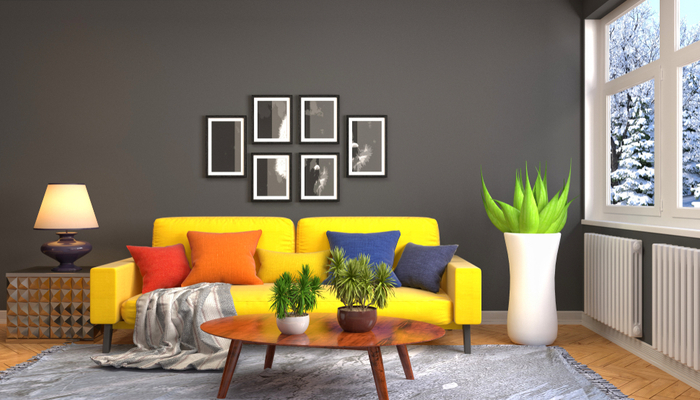When looking at trying to sell an already vacant home, sometimes staging is the best way to create a warm, inviting space that attracts buyers. Homes can sometimes seem overwhelming and cold when empty, and some buyers might have a hard time envisioning themselves there.
Empty homes also show wear and tear and imperfections because there is no furniture to hide it or distract from it.

Home staging has been around for a long time, and is an important tool for helping some clients sell their homes. Staging directly impacts sales. A 2018 survey of more than 4,000 homes showed that almost three-quarters of staged homes sold for at least 9% more than unstated neighboring homes.
Advances in technology have graced us with the ability to now virtually stage a home. Real estate agents can make an empty home more attractive to potential buyers easily, quickly, and inexpensively.
Why Should You Use Virtual Staging?
Virtual staging allows you to add furniture, art, rugs, and even different paint colors to the walls in photos of a home. You can then upload these virtually staged images online for buyers agents and potential buyers to view.
90% of buyers start their search online, so virtually staged photos can be a great way to catch their attention and foster interest in the home. It helps them visualize the potential of the space, envision themselves living there, and it makes the space more appealing and inviting.
Staging a home with real furniture can be a time-consuming and expensive process. Agents that are facing a time constraint or are looking to spend less money, virtual staging offers a more cost-effective, quick solution. Not only can it get done in an afternoon, but you’re looking at a cost difference of thousands of dollars.
85% of buyers say that the photos are the most important factor when they are viewing a home online. And while virtual staging won’t give you that same setup inside the home in real life, you have to remember that buyers will keep those images in mind as they walk through the home in person.
So while that couch may not actually be in the space, they’ve already had the idea implanted in their memory.
Make Sure You’re not Misrepresenting the Home
When looking at virtual staging options, it’s important to remember not to misrepresent the home’s condition.
While it may be fun to go crazy with paint colors, lighting fixtures, and architectural features, you don’t want to mislead buyers into thinking the home is in a much better condition than it’s in, or that it looks drastically different than it does.
This is only going to confuse and disappoint buyers. It may end up backfiring and causing the home not to sell.











